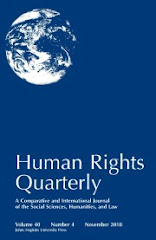BORDERLINES: THE TRANSNATIONAL AND DOMESTIC IN LAW AND LEGAL THEORY
Borderlines constitute the boundaries between and within legal orders. While borders assert their permanency and inviolability, guarding who the law protects and who it disregards, we know that they are contingent, moveable, transient and above all human creations. The word ‘borderline’ evokes many conflicting meanings — sharp divides, permeations and transgression, centre and periphery, the invisibility of some distinctions and the starkness of others, abnormality and a lack of normalcy, and the imprecision and vagueness of resting ‘on the borderline’ — each of which speaks to the relations between different legal orders that take on many forms, all of varying permanency. This year’s theme challenges participants to think about law legal theory in its transnational and domestic orders and forms through the concept of the borderline.
Where do the borders fall between and within the transnational and domestic, and why?
Transnational legal orders are wary of and antagonistic towards the borderline even as they assert its irrelevance. The domestic might be seen as the target, the market, or the audience of transnational law. Yet transnational law in an older, more strictly international sense treated the domestic as secluded; bordered away and free from international norms in all but the most serious of actions. How, where and why are these borders collapsed or reasserted? For domestic law the transnational can be welcomed as wisdom and cooperation or feared as threat and challenge. How does it border itself from the outside world? Why and how does the domestic subsume and contort that which it asserts is foreign? How does it ‘tame’ those things, behaviours, norms, and peoples it calls ‘savage’ or ‘wild’? Where does the transnational and domestic lay their borders? Who proclaims and perpetuates them? How are the borderlines imagined and drawn in the academy, the court, the ministry and the legislature? And how do activists, peoples and social movements respond?
How should we theorise the way the interactions between these orders take place?
Borderlines might at first seem a sharp ‘/’ that divides and excludes. But those sharing divisive borders can also be linked and unified by them. When might the borderline between legal orders be better read as a confluence, congruence, harmony, interaction, influx, encounter, tension, intrusion, conflict, or indifference? Should legal orders be imagined spatially: as bordered shapes, levels, webs, spheres or something else? Where do legal scholars draw their borders, and how do legal ideas move across intellectual, cultural and political borders? Should the jurist position herself as domestic or transnational? And what might we learn from examining and taking up how other academic traditions — the humanities, social and empirical sciences — approach the domestic and transnational?
How do different legal traditions and cultures deal with the transnational and domestic?
The civil and common law traditions locate domestic law within the nation-state and transnational laws across the borders states. But in what ways do we think beyond and against laws of the state? How is the transnational and domestic treated in other legal orders — religious, customary, indigenous — and where do they lay their own borders? How does the domestic and transnational respond to the non-national? Do these terms carry or connote different meanings for peoples, governments and organizations in the Global South/North, or East/West? And what treatment of those laws made other is needed for an order to function, to maintain its claim to authority over a body of people or law?
Monday, June 30, 2014
Call for Papers: Borderlines: The Transnational and Domestic in Law and Legal Theory
A call for papers has been issued for the seventh annual Melbourne Doctoral Forum on Legal Theory, to be held December 1-2, 2014. The theme is "Borderlines: The Transnational and Domestic in Law and Legal Theory." Here's the call:





